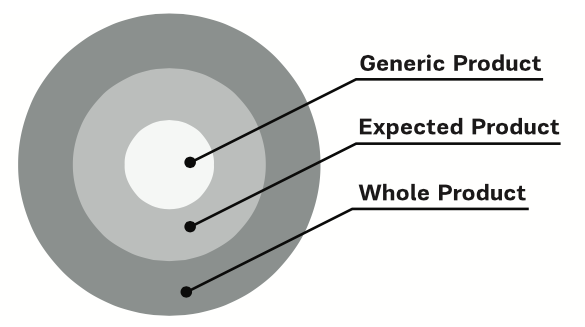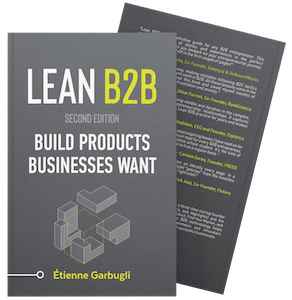B2C consumers are accustomed to ‘what you see is what you get.’ They can choose to use it or not. Businesses have higher expectations (customization, integration, security, etc.). Startups need to entirely focus on what the business wants. – Richard Aberman, WePay Co-Founder
In enterprise, the bar is set high for a product. There are a lot of things that must be put in place just so your startup can be considered a valid vendor by your prospects.
What is The Whole Product in B2B?
The concept of the minimum set of requirements (features, certifications, partnerships, etc.) required to convince businesses to work with you is what Bill Davidow, author of Marketing High Technology — a precursor to Crossing the Chasm (great book: 15 Books Every Entrepreneur Should Read) — calls “the whole product.”
Building a whole product might mean adding a special security token, being compliant with an industry standard or building third-party integrations. It can be a lot of work, but it’s also a great barrier to entry for your product once everything is in place.
PRODUCT EXPECTATIONS
Examples of Product Expectations in B2B
For Dropbox, this meant answering questions over security, file control access, and adherence to a variety of data storage standards. They had to make major changes to their IT admin console to add the capability to monitor user activity and introduce single sign-on (SSO) to plug into existing credential systems.
Dropbox’s main competitor, Box.com, was focused on the enterprise from the start. They had already built their whole product and had been leveraging difficult to obtain certifications like the HIPAA Health care certification to create barriers for Dropbox.
As an entrepreneur, you need to understand the whole product — the minimum feature set — that your prospects require in order to do business with you. There’s a good chance that the features you can think of will not be enough for all customer types.
More on The Whole Product
- Your Product Needs These 3 Features
- How to Use Customer Discovery to Build a Startup: The Definitive Guide
- How to Run Customer Exit Surveys to Improve Product Retention [The Definitive Guide]
Download the First 4 Chapters Free
Learn the major differences between B2B and B2C customer development, how to think about business ideas, and how to assess a venture’s risk in this 70-page sampler.
Working on a B2B Startup?
Learn B2B customer development with our free email course:



